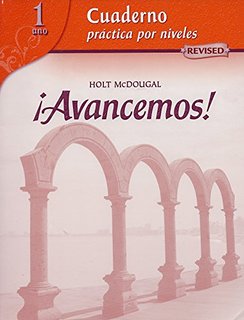
All Solutions
Page 370: Gramatica A
|Singular |Plural |
|–|–|
|Yo **me** |Nosotros **nos** |
|Tú **te** | / |
|Él/Ella/Usted **le** |Ellos/EllasUstedes **les** |
*(Do you want to go on vacation? I will send * you/me* the name of the hotel.)*
The word *”(tú) quieres”* helped us figure out which pronoun to choose. *”Quieres”* is second-person singular form of *querer*, so we used the second-person singular pronoun, which is “***te***.”
*(Susana does not find her hair comb. I give her/us my comb.)*
*Susana* is third-person singular, so we used the third-person singular pronoun, which is “***le***.”
*(Patricia and I bought handicrafts. We/You like the handicrafts.)*
*Patricia and I (we)* is first-person plural, so we used the first-person plural pronoun, which is “***nos***.”
*(Do you know how to surf? Do I/you like doing it?)*
The word *”(tú) sabes”* helped us figure out which pronoun to choose. *”Sabes”* is second-person singular form of *saber*, so we used the second-person singular pronoun, which is “***te***.”
*(Can you buy me/her sunblock?)*
Here, we assumed the person asking the question wanted sunblock. That is why we used “***me***.”
1. te
2. le
3. Nos
4. Te
5. Me
Hint: You were given two sentences. In the first one, you will find the object/subject the pronoun should refer to.
|Singular |Plural |
|–|–|
|Yo **me** |Nosotros **nos** |
|Tú **te** | / |
|Él/Ella/Usted **le** |Ellos/EllasUstedes **les** |
*(I need the soap. Can you give it to me?)*
The word *”(yo) necesito”* helped us figure out which pronoun to choose. *”Necesito”* is first-person singular form of *necesitar*, so we used the first-person singular pronoun, which is “***me***.”
*(Claudia wants some earrings. Can you buy her some silver earrings?)*
*Claudia* is third-person singular, so we used the third-person singular pronoun, which is “***le***.”
*(My parents do not know how I am. Can you send them an e-mail?)*
*My parents (they)* is third-person plural, so we used the third-person plural pronoun, which is “***les***.”
*(Are you sick? Can I give you something?)*
The word *”(tú) estás”* helped us figure out which pronoun to choose. *”Estás”* is second-person singular form of *estar*, so we used the second-person singular pronoun, which is “***te***.”
*(Álvaro and I are having/making barbecue. Can you tell us how to do/make it?)*
*Álvaro and I (we)* is first-person plural, so we used the first-person plural pronoun, which is “***nos***.”
1. Me
2. Le
3. les
4. te
5. Nos
Here is a table to help you with indirect object pronouns:
|Singular |Plural |
|–|–|
|Yo **me** |Nosotros **nos** |
|Tú **te** | / |
|Él/Ella/Usted **le** |Ellos/EllasUstedes **les** |
– Puedo comprar**les** recuerdos a mis amigos.
*(I can buy my friends souvernirs.)*
*My friends (they)* is third-person plural, so we used the third-person plural pronoun, which is “***les***.”
– Puedo comprar**le** aretes a mi hermana.
*(I can buy my sister earrings.)*
*Sister* is third-person singular, so we used the third-person singular pronoun, which is “***le***.”
– Puedo comprar**te** artículos de madera (a ti).
*(I can buy you wooden products.)*
*Tú (you)* is second-person singular, so we used the second-person singular pronoun, which is “***te***.”
At the end of the sentence, we put *”(a ti)”* in parenthesis because it should be omitted; it is redundant in this sentence.

